
|
Digital visual effects for movie pre-calibration  The digital calibration task was made to reframe the captured images dynamics on luminance and colour (digital film or video digital), in order to make it compatible with the dynamics of the restitution media: projection from a positive film, digital jpeg 2000 projection, TV screens or computers, ... This is usually done by using static nonlinear transformations called LUT, which change luminance, contrast, and colour saturation. Thereby altering the dynamics of the image also take the opportunity to change emotional perception of the viewer, making voluntarily darker or lighter image, or emphasizing cold or warm colours, or still slightly desaturate the entire film, then adding a uniform global background dye (Yellow, blue, green, ...), etc.. We can say that in this modern calibration is part of the overall artistic work on a film. The colourists have to support more and more requests from film directors and cinematographers. We had already shown in previous issue of our newsletter NEXYAD FX, a visualization method of the colourful atmosphere of a film using the barcodes. But modern calibration systems, if they can change targeted colours, densities, contrast, have strong limits : the colour selection is imperfect, the management of image masks is not automatic (no tracking or too simple tracking methods), higher density / saturation / contrast brings out the noise of images (film grain, electronic noise). However, there are now new and advanced digital methods of post production that enable more radically image transformation. These methods are on the border between the special visual effect and the calibration. We called this phase " pre-calibration ". Indeed, once these pre calibration/visual effects made, it is usually necessary to put the film in the hands of a colourist that will standardize the complete movie, increase or decrease some effects, and adapt the film to the restitution media dynamics. In this issue we present several pre calibrations examples. In particular, we show "season" effects (fall, winter), and day for night. We present several calibrations for the same video rush, in order to demonstrate the importance of this phase on the overall emotional perception of the film. We show some pre calibration inspired of famous movies (Pitch black, 300, Sin City) : it is important to notice that we take regular video shootings (no special work during the shooting to lead to the desired effect : so getting those visual effects from regular video shootings is completely new). We give also a link (HD) to a video clip which was completely post produced by NEXYAD (creation, animation, and integration of 3D objects, colour pre-calibration, blue and green screens for background integration with moving camera, ...). In this video clip (shot with a Canon 5D Mark II – for a movie quality in the end), the work on colours is particularly sophisticated. This example clearly shows that a clever pre-calibration work can help lowering production costs. Enjoy. 1 – The eye is not a camera: possible aims of the pre calibration The human eye is not a camera. The brain is not a hard drive or a film, that would be just recording the images.  The eye captures light with photosensitive elements : the cone cells, and the rod cells. The cone cells are of several types and give us the vision of colours. The rod cells are not sensitive to colours, they bring a vision in black and white. 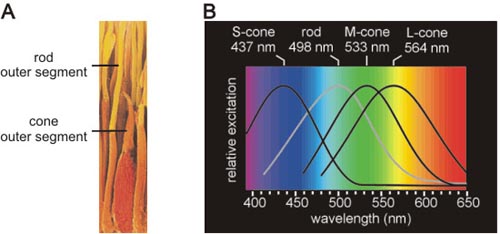 The middle of the eye is covered with a dense network of photosensitive cells , mainly cone cells. This area is called the fovea. The periphery of the eye contains more rod cells, and fewer cone cells. The rod cells do not see colour, but they are more sensitive to small light. As a result, the day we “see” with a very dense network of cells sensitive to colour (we “see” in colour, with high spatial resolution), and at night we “see” with a less dense network of cells that are not sensitive to colour (this is called night vision : we “see” in black and white, with a low spatial resolution : "at night all cats are gray"). The sensitivity of the eye is complex : we don’t have the same detection sensitivity for every colour, we do not perceive the luminance contrast in the same way depending on the level of ambient light, we do not need the same level of contrast to see an object depending on its apparent size …  The captured information is transmitted to other cells of the retina : nerve cells organized in a very architectural network (lateral inhibition, for instance), which connects these neurons together in order to make them compute image processing operations : contour detection/Mach effect, Local balance of contrasts, adaptive white balance, ...).  The basic units of detection in the retina (especially rod cells) are also sensitive to movements (and sensitivity to movement is stronger on the periphery of the retina than in the center). Last but not least, humans have a binocular vision with a circular visual angle of about 180 degrees. We can see then, that the camera (film or digital) is very far from the human eye. So, it is illusory to compare a captured image (via a camera) with what one has "seen" and felt watching the scene (in situ). This means that the "rush" before post-processing is necessarily far from the natural perception. Making us feel the same thing one feels when viewing the scene in situ, thus necessarily demand a lot of changes and image post-processing. Keeping the images as close as possible to the rush, pretexting not to "cheat" the reality is therefore absolutely inadmissible, because the “reality” (as perceived by our vision system) is not captured by the camera. We can then see the pre calibration task from several angles: - purely aesthetic (it changes colours to produce a world that doesn’t necessarily exist, but that makes sense in the film). - purely realistic (to be realistic, we must integrate sensory psychology knowledge about our vision system, in order to lure the eye, and produce on a flat rectangular screen, with a limited size and resolution, an experience that recalls the best experience in situ). In both cases, a discussion in situ, during scouting, with film director, cinematographer, and the pre-calibration team, is generally a good way to understand what and how everyone "sees" ("what is interesting here, in this we are watching? "). This kind of discussion is one of the bases of work (among others), which may for example lead to bring out certain textures, or conversely to erase textures to bring out the solids and color shades, bring out certain colors, or make the film hard pastel, etc ...). Similarly, natural vision is "smooth", or the film has a grain (Silver grain, digital noise): what choice do we do ? realistic (Without grain) ? grain for aesthetics ? etc ... Depending on the desired end visual effects, we can recommend a particular method of shooting (polarizing or no polarizing, under exposed or not, light filters - yellow blue, ... - etc ...) in order to simplify the overall work and lower production costs while maximizing the final visual of the film. 2 – Complexity of the pre-calibration task Digital pre calibration consists in selecting areas, characterized by a luminance, hue, saturation, texture, movement, size,. .. and then in modifying these areas : their luminance information, hue, saturation, texture, ... For example, if you wish to modify the aspect of a water surface - the sea - : It is necessary to be able to select large areas, middle-high blue turquoise, not verysaturated, with a smooth texture, and moving periodically (Repetitive movements due to waves). Then you can decide to recolor this water surface (in dark blue, pink, ... as you wish). The main difficulties are: - The accuracy of selection masks : an error of one pixel let us see a coloured band adjacent to the recoloured area … - Temporal stability of the selection masks: if some pixels are ambiguous (very near the selected characteristics with some noise), they will be taken from time to time in the template, and for a slight variation, they will come out sometimes, which generates flashes. - Commercial tools usually cannot combine both the luminance, hue, colour saturation, texture, movement, size. - The image noise brings fluctuations of luminance, hue, colour saturation, but also texture (as amended by the grain of film), and movement (since the image noise is perceived as a random tingling by our brain, this random movement is superimposed on the movement of the scene.) . Moreover, the mathematical representation of the pixels can be separated into two families of spaces : the Cartesian coordinates space (eg R, G, B), and the polar coordinates space (Eg H, S, L). Of course there are many versions and variants of these two types of representation. Cartesian coordinates space (type R, G, B) is a simple representation (from the mathematical point of view), but components of the pixel in this mode are difficult to interpret because they are not independent. It is the combination of 3 values of R, G, B, that gives the colour, for example. 
 To get more independent concepts, have been introduced the so-called polar representation (like H, S, L) : each component represents an independent semantic concept (H = Hue S = Saturation, Luminance = L). 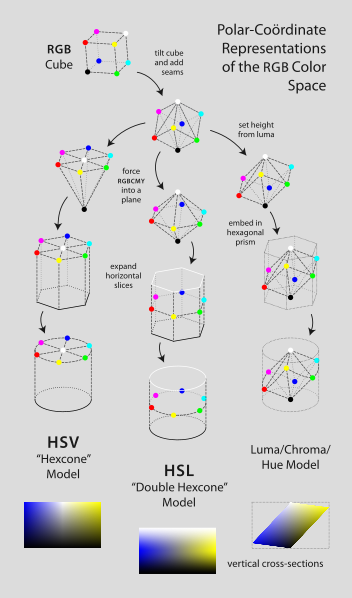 But this mode of representation suffers from the fact that the colour H is mathematically represented by an angle (ranging from 0 degrees to 360 degrees) : then, 360 degrees is a complete revolution, and therefore a return to zero. Thus, the colours represented by large values of H (close to 360 degrees) and those represented by small values of H (near zero degrees), are visually very similar. The colour coding violates the rule: "When two colours are very close, they are represented by two values that are numerically very close / When two colours are very different, they are represented by two widely separated values of H “. And when this property (called, "Topology") is broken, most mathematical calculations on the images generate artifacts (unselectable colours, although they are seen very well to the eye and are similar to selected colours, colours are selected although our eye sees those colours as very different ...). Of course, the commercial tools are all working on these technical problems, but they have much more industrial problems to deal with (management of software versions, compatibility, debug, real time performance that prohibits the use of sophisticated computing methods - ...). NEXYAD has developed and continues to develop a set of pre calibration methods that can overcome most traps. These methods are suitable for use in off line pre calibration (it's not like on a real time machine calibration: masks are pre-calculated like it is done for special effects in general). Once the important rush scenes are pre calibrated (or even the entire film), it is necessary to put the film in classical calibration machines (in the hands of calibrators/colorists) to give the film an overall final graphic look. We show in the next section examples of pre- calibrated sequences, that are representative of cases whose resolution would be complicated using classical calibration machines. (or too expensive : for instance if it would need rotoscopings, frame by frame ...). 3 - Examples of pre-calibrated sequences (click on photos to watch videos) Sequence of “stones thrown into a lake” (test rush conducted with the French cinematographer Philippe Piffeteau) : Rush 35 mm  Day for Night pre-calibration :  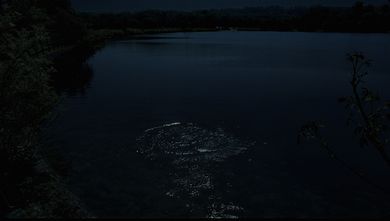 (click on photo to watch videos) Winter effect pre-calibration :   (click on photo to watch videos) Road movie sequences in the video clip of the artist proxima (images by Alcatraz prod): Rush video (Canon 5D Mark II) 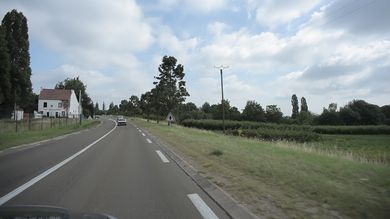 Extreme colour change pre-calibration (inspired by the film 300)   (click on photo to watch videos) Rush video (Canon 5D Mark II)  Extreme colour change pre-calibration (inspired by the film 300)   (click on photo to watch videos) Campfire on the beach at low tide sequence (images NEXYAD) : Rush (vidéo HD Canon 5D Mark II)  Day for Night pre-calibration   (click on photo to watch videos) Extreme contrast and colour change pre-calibration (inspired by the film Pitch Black)   (click on photo to watch videos) Aesthetic pre calibration with blue sky, blue sea …   (click on photo to watch videos) Champs Elysees in Paris sequence (images Alcatraz prod) : Rush (vidéo HD Canon 5D Mark II)  Extreme colour change pre-calibration (inspired by the film 300)   (click on photo to watch videos) Extreme colour change pre-calibration (inspired by the film Sin City)  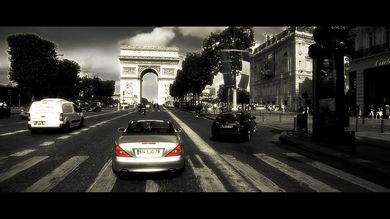 (click on photo to watch videos) 70’s silver screen pre-calibration (inspired by the film Zodiac)   (click on photo to watch videos) sequence of the TV serie "everything seriously harms you" (images Alcatraz prod) : Rush video (Panasonic HVX200) 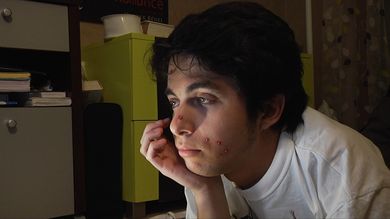 pre-calibration that brings out the funny details   (click on photo to watch videos) Panoramic sequence from ground to sky (tests conducted with the French cinematographer Philippe Piffeteau) : Rush 35 mm  Day for Night effect pre-calibration   (click on photo to watch videos) Fall effect pre-calibration   (click on photo to watch videos) For more information, contact NEXYAD : contact@nexyad.net |
|